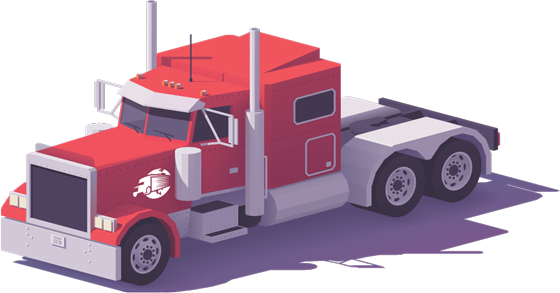What is Oversized Cargo
Freight networks commonly encounter logistical challenges related to regulations on transport weight, axle limits, and dimensions. The specific restrictions on oversized transport vary from location to location. Transport operators must secure adequate clearance from regional authorities and ensure regulatory compliance when shipping oversized cargo. If you’re in need of shipping transportation, we have logistics services for all of your specialized shipping needs.
Types of Oversized Transportation
There are numerous applications where oversized transport should be considered. Frequent examples include the delivery of housing, heavy machinery, large containers, generators, and construction gear.
Construction Cargo
Oversized transport is regularly used to ship large-scale construction equipment. Construction freights might include cranes, bulldozers, tractors, steel beams and girders, or other heavy machinery. Operators should be experienced with the use of heavy equipment and which transport tools will best serve the situation.
Depending on the circumstances, a freight might require the work of trailers, lowboys, or forklifts. Permits will differ depending on the number of components being transported, their individual heights, and the weight of each structure.
Prefabricated Homes
Manufactured housing requires careful observance of oversized transport laws to navigate public roadways. The size, weight, and relatively fragile nature of prefabricated homes poses a difficult challenge for logistical supply chains. Unlike heavy machinery transport, home delivery and / or relocation requires an array of specialized equipment to support the freight’s integrity in transit.
Load shifting on a highway can result in the structural supports of the house splintering or stripping, scattering wreckage into nearby traffic or damaging the roads.
For more information about the different types of freights, read our blog here!
Why Oversized Transportation?
Transport Networks
Oversized transportation generally necessitates a specialized analysis of acceptable delivery routes. Researching appropriate routes with proper overhead and lateral clearances, projected traffic volume, and other obstacles is a crucial, yet time-consuming effort. Designating a freight transportation service to build a plan for shipments will drastically reduce costs associated with efficient deliveries.
Important considerations include:
- Number of bridges on a route, and the types of bridges
- Presence of overhead obstacles (such as signs, street lights, buildings, or infrastructure elements)
- Presence of lateral obstacles (such as road railings, signs, road widths, turn widths)
- Elevation changes along the route (incline and decline grades, sharpness of turns, speed limits variations)
Regulatory Compliance
Regulations will vary in accordance with regional/local laws and provisions. Operators must secure the proper permits in order to ensure compliance with the specific guidance native to a selected transport route. Determining which permits are necessary can be a complex process, and should account for the manner of transport being utilized. For example, unimodal and multimodal transport (e.g. employing multiple vehicles) can require differing clearances or additional permits.
Permits may be specified further to include considerations for freight load (total weight of the transport), axle load (generally rated on a per-axle basis), route distance, or the equipment company itself.
The Benefit of Oversized Transportation
Cost Optimization
Oversized transport involves a wide variety of special equipment applications, quality control practices, and logistical oversights. Delays, detours, or mistakes made along the way contribute to significant penalties in the cost of any freight delivery.
Efficiency of Delivery
Similar to cost optimization, the specified route and its efficiency weigh heavily on the outcome of oversized cargo transport. A well-developed transport strategy will reduce the time in transit, mitigate the risk of errors on the road, and ensure timely service between businesses.
Conclusion
Surmounting the challenges presented by large-scale freight transport is critical to an efficient logistical system. Developing a practical strategy for delivering goods from point A to point B saves on two of the most valuable assets to any business: time and money.
Researching and implementing a quality management plan for oversized cargo is no small task. NAS can help. Reach out for a quote on freight transportation services.


